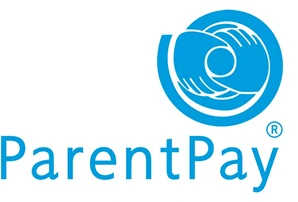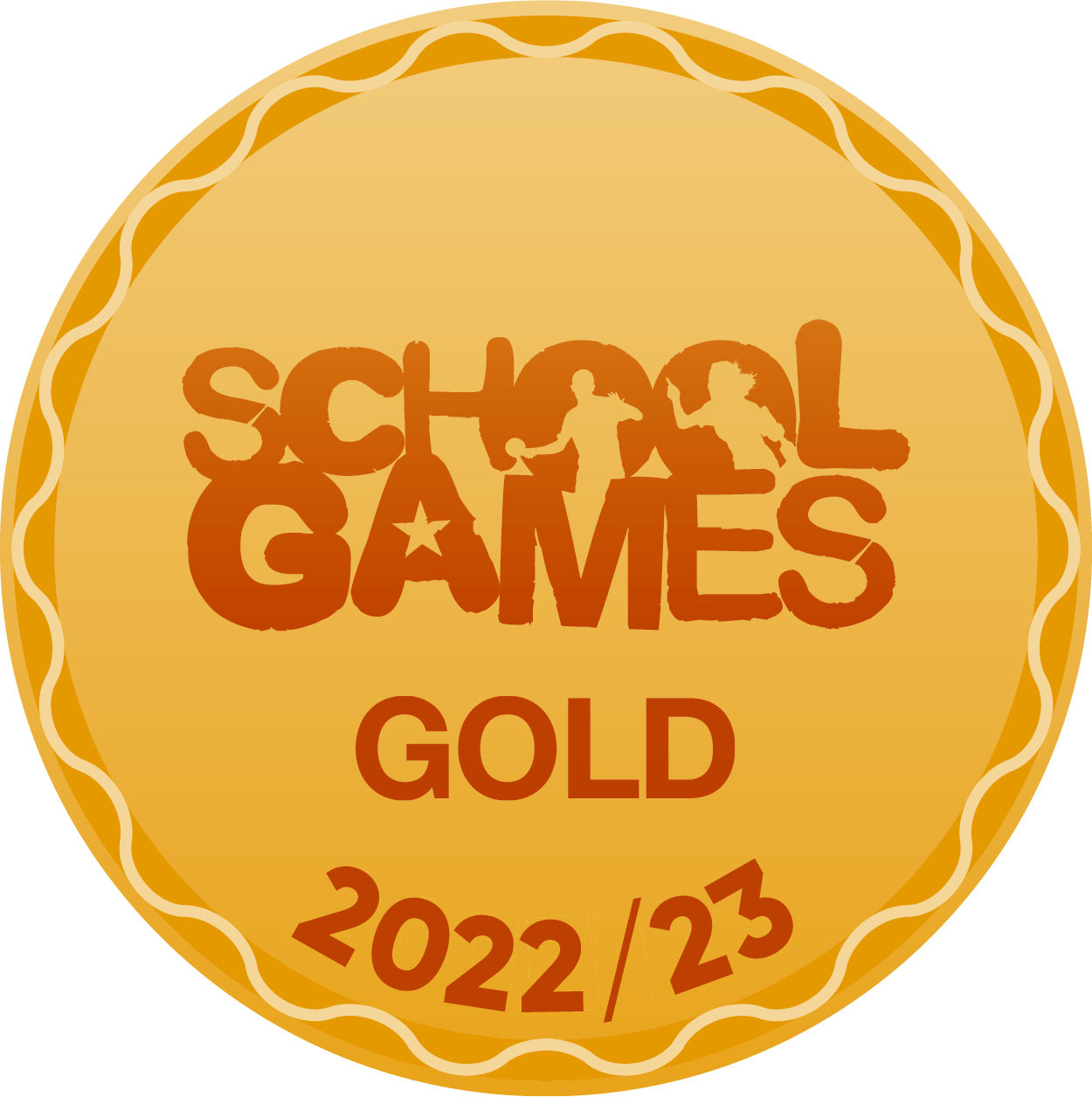A Level Art & Design: Textile Design
In the Art department we offer the following A Level courses:
- Art & Design: Fine Art or Art & Design: Textile Design
- Art & Design: Photography
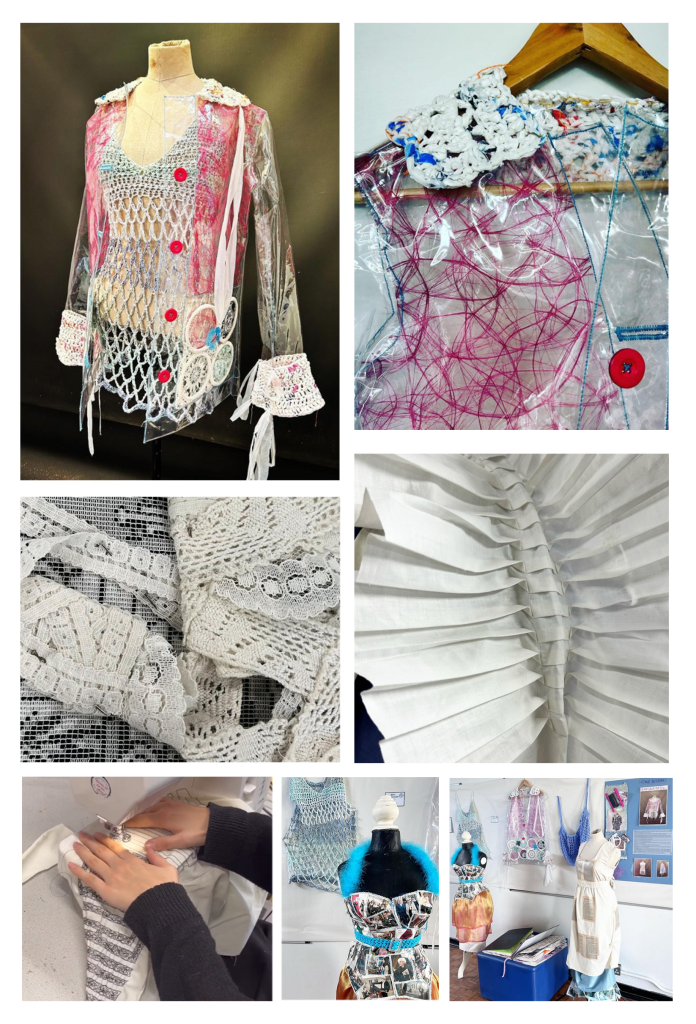
A-Level Art & Design: Textile Design
A Level Art & Design: Textile Design is a 2-year course with 1 Externally Set Assignment (exam) at the end of the second year.
This course is for students who want to study Art Textiles to a higher level and is ideal for those who want to go on to study an Art related course at University.
Students who choose the Textile Design course will be introduced to a variety of experiences that explore textile media, processes and techniques. Students will have the opportunity to investigate a range of art, craft and design and can explore a combination of the following areas:
- Fashion design and textiles
- Costume design
- Digital textiles
- Printed and/or dyed fabric and materials
- Domestic textiles and wallpaper
- Drawing and painting
- Interior design
- Art textiles
- Constructed and installed textiles
The A level Art & Design: Textile Design course is made up of two components that stretch across the 2 years of study:
Component 1 – Personal investigation (60%)
1. Practical work
The Personal Investigation is an extended practical project based on a personal response to a theme or starting point. Students will generate ideas and experiment how to express them through a variety of materials and processes. They will develop and refine their ideas through experimentation and research into different techniques, styles of art and textiles and the work of other artists and designers. Students document their explorations through the use of sketchbooks/workbooks/journals and larger scale pieces.
2. Personal study
This is a separate piece of critical and analytical writing (1000 words) making links to the student’s own Personal Investigation, and supported by artist and designer research and references. Through the personal study, students will demonstrate understanding of relevant social, cultural and historical sources. Students will also express personal interpretations or conclusions and use technical and specialist vocabulary.
Component 2 – Externally Set Assignment (40%)
This is an externally set assignment from the exam board. Students will produce another practical project in the same manner as their Personal Investigation, developing their skills to a higher level in response to a starting point set out in the exam paper.
Students will be expected to submit all their preparatory studies (sketchbook work) and an outcome that will be completed in a Controlled Assessment (15 hours).
Both the coursework portfolio and the exam are marked using the same Assessment Objectives:
- AO1: Develop ideas through sustained and focused investigations informed by contextual and other sources, demonstrating analytical and critical understanding.
- AO2: Explore and select appropriate resources, media, materials, techniques and processes, reviewing and refining ideas as work develops.
- AO3: Record ideas, observations and insights relevant to intentions, reflecting critically on work and progress.
- AO4: Present a personal and meaningful response that realises intentions and, where appropriate, makes connections between visual and other elements.
A Level Art & Design: Textile Design Further Information
Music and Drama Extra Curriculum
The Music Department has a vibrant extra-curricular timetable, with clubs on each lunchtime ranging from Young Voices rehearsals to Orchestra, from Rock Band to Percussion Ensemble. There is always a club to get involved in for all students whether a beginner or an experienced musician. The extra-curricular timetables are shown around the Music Department.
The Music Department also has strong links with the Drama Department, putting on a yearly school production in the summer term.
2021 – We Will Rock You: School Edition
2022 – Grease: School Edition
2023 – Addams Family: School Edition
Music and Drama Extra Curriculum Timetable
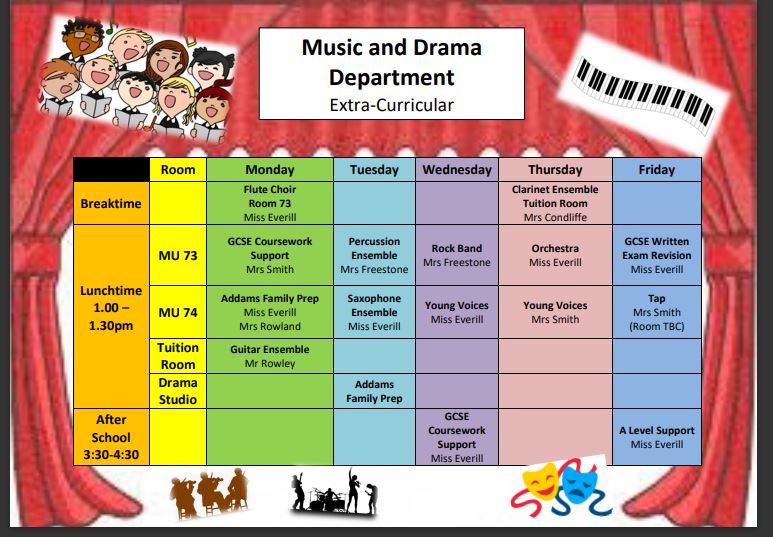
Art in Year 9
Year 9 prepares students for the challenges of GCSE Art & Design, introducing students to how and why artists create work that communicates a concept and deeper meaning in a prolonged project throughout the year.
During this year pupils will:
- Be able produce creative and imaginative outcomes that critically analyse and question a given theme/concept, working on a year long project working towards a larger final piece, in preparation for work practice in GCSE Art & Design
- Continue to explore a wide range and combination of materials and techniques such as: drawing, portrait and hand drawing, acrylic, oil pastels, watercolour, collage, biro, Sellotape transfer, wax transfer, mixed media final outcome…
- Investigate and research the work of contemporary and historical artists and makers such as: Jennifer Collier, Evelyn Tannus, Heikki Leis..
- Develop their visual literacy skills through critical analysis of the work of others and the critical evaluation and creation of their own artwork, learning how to use annotation to further their creative journey through a project
- Build an awareness of the further applications and functions of Art & Design in society (art practice, scientific recording and observation, advertising) and able to make links between their own work and the work of other artists
- Develop a meaningful and personal project with a final outcome, in preparation for the coursework created during GCSE Art & Design
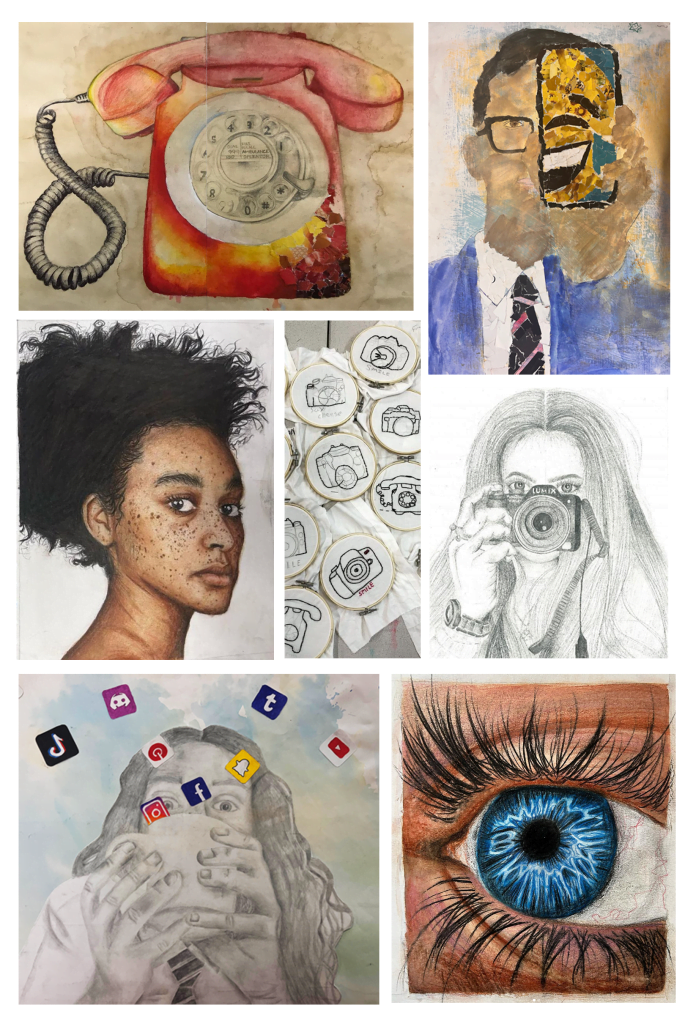
Visual Communication: Students will work on the project entitled ‘Visual Communication’ throughout year 9. This prolonged project is workshop based, allowing students to learn and develop new and exciting techniques and skills. They will explore a range of materials and media in their sketchbooks looking at ways of communication, culminating in a final outcome regarding ‘The Perils of Social Media’. During this year, students will also have the opportunity to work with a visiting artist!
KS3 Year 9 Art Further Information
Science
Coming Soon!Technology
Coming Soon!Music
Coming Soon!Drama
Coming Soon!A Level Art & Design: Photography
In the Art department we offer the following A Level courses:
- Art & Design: Fine Art or Art & Design: Textile Design
- Art & Design: Photography
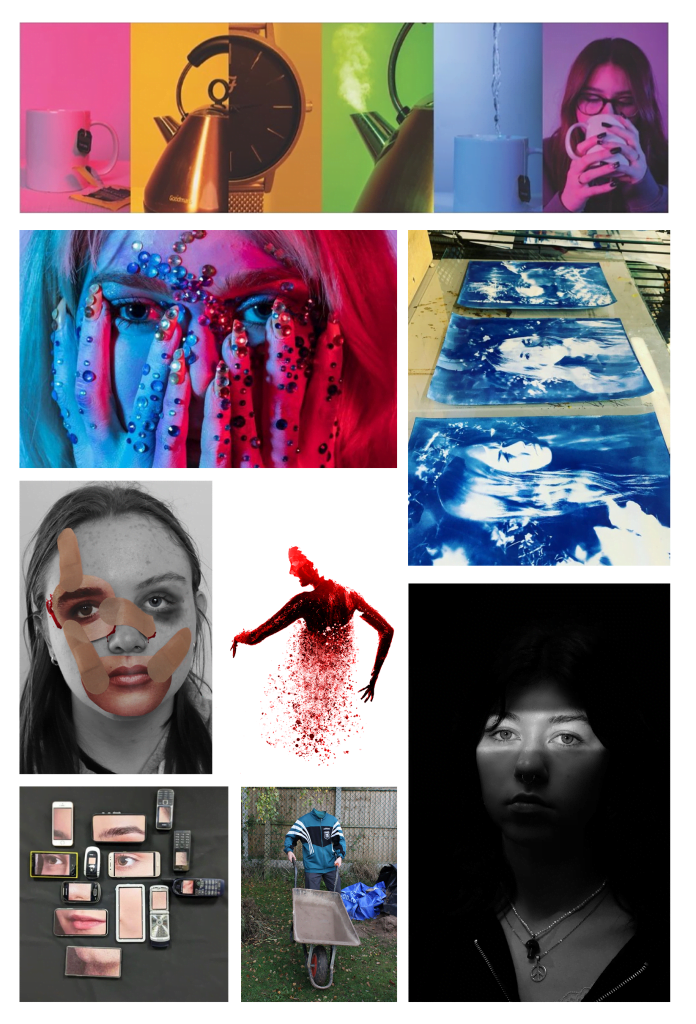
A-Level Photography
The A level Art & Design: Photography course is a 2-year course with 1 Externally Set Assignment (exam) at the end of the second year.
This is a course for students who want to study an introduction to Photography and is ideal for those who want to go on to study an Art or Photography related course at University.
A Level Photography students will have the opportunity to explore a wide range of ideas within Photography. They will learn about contemporary and historical photographers and develop relevant industry skills in both the use of DSLR cameras, software packages such as Adobe Photoshop and studio lighting equipment. Students can explore a combination of the following areas:
- Portraiture
- Landscape photography
- Still life photography
- Documentary and photojournalism
- Fashion photography
- Experimental imagery
- Multimedia
- Photographic installation
- Moving image (video, film, animation)
The A level Art & Design: Photography course is made up of two components that stretch across the 2 years of study:
Component 1 – Personal Investigation (60%)
1. Coursework Portfolio/ Personal Investigation
Students produce a body of work that takes the form of a sketchbook supported by an A3 portfolio of their own images. They explore an idea or theme developing work in a way that reflects their personal interests or strengths until they reach a final outcome. Work produced should satisfy the Assessment Objectives and demonstrate that they have researched and responded to photographers relevant to their theme, experimented with their images and objects through photography and then produced a relevant final piece.
2. Personal Study
This is a separate piece of critical and analytical writing (1000-3000 words) making links to the student’s own Personal Investigation, and supported by artist research and references. Through the personal study, students will demonstrate understanding of relevant social, cultural and historical sources. Students will also express personal interpretations or conclusions and use technical and specialist vocabulary.
Component 2 – Externally Set Assignment (40%)
Students will be issued with a paper from which they will select a title/starting point to develop ideas. They will have time to produce preparation work that satisfies the first 3 AO’S (just as they have done for their coursework) before they begin their exam. With Photography, students will spend their exam editing one (or a series) of their own images selected as a final piece using Photoshop.
The A Level exam is 15 hours long typically split into a series of sittings of up to 5 hours. As in other subject areas exam conditions are observed. The focus in the exam is to produce a final outcome that satisfies AO4. Both the coursework portfolio and the exam are marked using the same Assessment Objectives (AQA A Level Art & Design).
A Level Art & Design: Photography Further Information
A Level Art & Design: Fine Art
In the Art department we offer the following A Level courses:
- Art & Design: Fine Art or Art & Design: Textile Design
- Art & Design: Photography
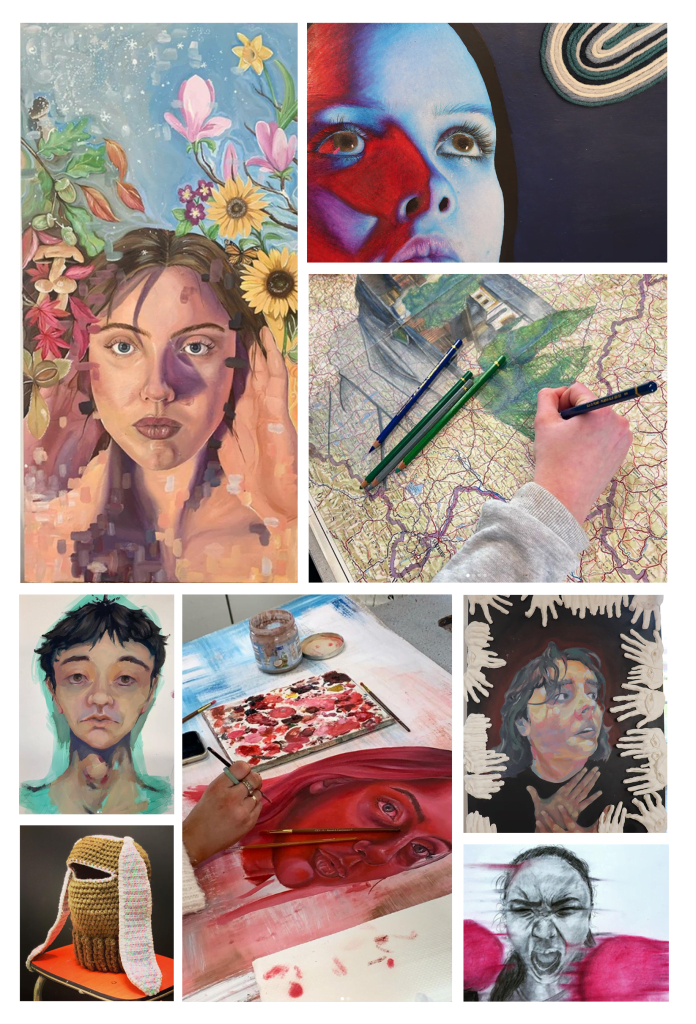
A-Level Art & Design: Fine Art
A Level Art & Design: Fine Art is a 2-year course with 1 Externally Set Assignment (exam) at the end of the second year.
This course is for students who want to study Art to a higher level and is ideal for those who want to go on to study an Art related course at University.
Students who choose the Fine Art course will be introduced to a variety of experiences that explore fine art media, processes and techniques. Students will have the opportunity to investigate a range of art, craft and design and can explore a combination of the following areas:
- Drawing and painting,
- Mixed media, collage, assemblage, textile
- Sculpture and ceramics
- Installation
- Printmaking
- Moving image and photography
- Traditional and new media
The A level Art & Design: Fine Art course is made up of two components that stretch across the 2 years of study:
Component 1 – Personal investigation (60%)
1. Practical work
The Personal Investigation is an extended practical project based on a personal response to a theme or starting point. Students will generate ideas and experiment how to express them through a variety of materials and processes. They will develop and refine their ideas through experimentation and research into different techniques, styles of art and the work of other artists. Students document their explorations through the use of sketchbooks/workbooks/journals and larger scale pieces.
2. Personal study
This is a separate piece of critical and analytical writing (1000 words) making links to the student’s own Personal Investigation, and supported by artist research and references. Through the personal study, students will demonstrate understanding of relevant social, cultural and historical sources. Students will also express personal interpretations or conclusions and use technical and specialist vocabulary.
Component 2 – Externally Set Assignment (40%)
This is an externally set assignment from the exam board. Students will produce another practical project in the same manner as their Personal Investigation, developing their skills to a higher level in response to a starting point set out in the exam paper.
Students will be expected to submit all their preparatory studies (sketchbook work) and an outcome that will be completed in a Controlled Assessment (15 hours).
Both the coursework portfolio and the exam are marked using the same Assessment Objectives:
- AO1: Develop ideas through sustained and focused investigations informed by contextual and other sources, demonstrating analytical and critical understanding.
- AO2: Explore and select appropriate resources, media, materials, techniques and processes, reviewing and refining ideas as work develops.
- AO3: Record ideas, observations and insights relevant to intentions, reflecting critically on work and progress.
- AO4: Present a personal and meaningful response that realises intentions and, where appropriate, makes connections between visual and other elements.
A Level Art & Design: Fine Art Further Information
GCSE Art & Design
GCSE Art & Design is a broad and varied course exploring practical, critical and contextual work through a range of 2D and/or 3D processes and new media and technologies. This GCSE course is made up of two separate units, Portfolio of Work and Externally Set Task, which are completed across year 10 and year 11.
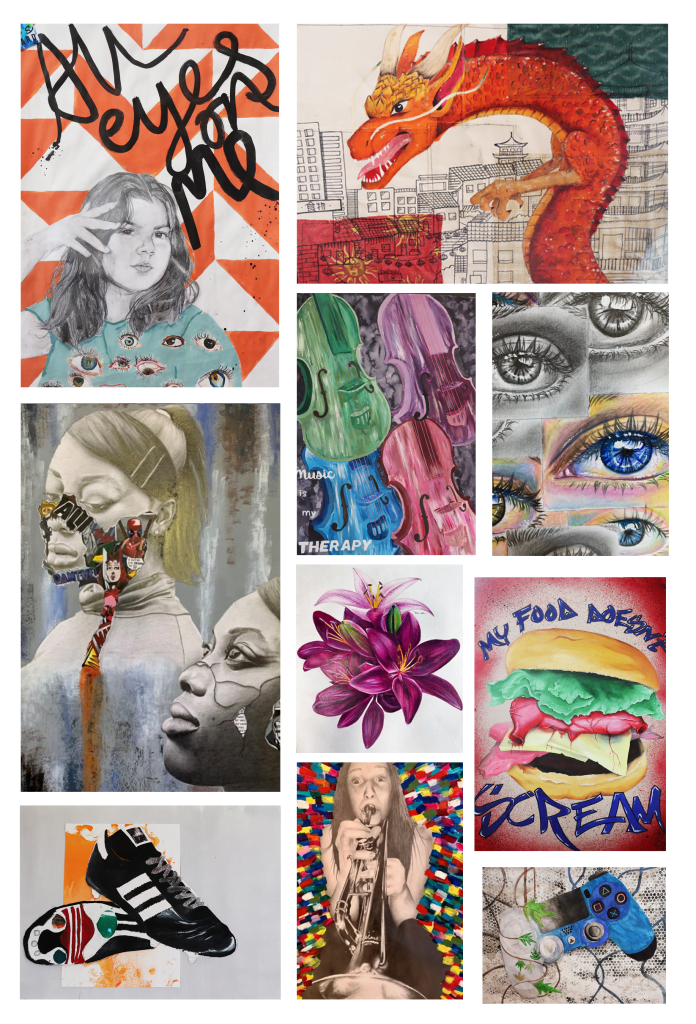
Unit 1 Portfolio of Work
Supporting Unit
• Students are given the opportunity to experiment and develop their skills in a wide variety of techniques, media and materials through a series of workshops and tasks
• This unit allows students to develop drawing skills, critical understanding, use of materials and experimental techniques
• Exploration of materials and techniques are inspired and supported by research of a range of contemporary and historical artists and makers
• The use of a sketchbook throughout this unit allows students to experiment with ideas and materials, using their book for recording changes to their ideas, composition ideas, artists references and experiments with techniques.
Portfolio Unit – ‘Identity’
• To demonstrate that students can sustain work from an initial starting point to the realisation of intentions
• Includes evidence of research, the development of ideas and meaningful links with critical and contextual sources.
• The theme of Identity is very wide ranging and allows all students to be able to find a relevant starting point to take their work forward.
• Students present their explorations, photographs, experimentations and research using large A1 sheets to create a full portfolio of work, working towards producing a final resolved outcome at the end of the project.
Unit 2 Externally Set Task (Exam)
• This unit is externally set by the exam board, where students will receive an exam paper with a variety of starting points to choose to base their final project on.
• Students will further develop the skills they have acquired through Unit 1 by choosing their own theme from the exam paper to create an exciting, broad body of work using the skills and presentation skills they have developed in their first unit of work.
• As this is an externally set task, students will produce their final resolved outcome during controlled assessment (10 hours exam time).
Throughout both units, students are encouraged to evidence the relationship between process and outcome, reflect on and evaluate their experimentation process and research and visit galleries and museum to inform their own work. Students can explore any number of methods and materials such as photography, video/film, animation, installation, ceramic forms, sculptures, mixed media, printing, textiles, drawing and painting.
